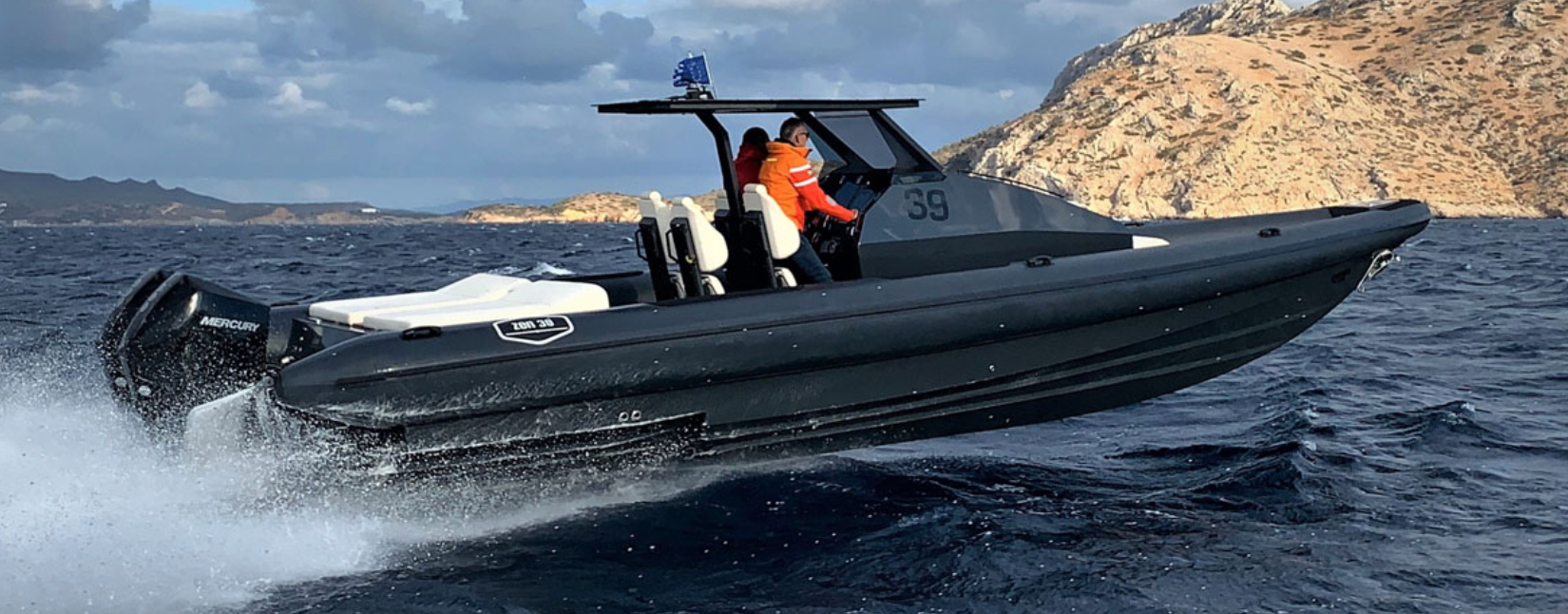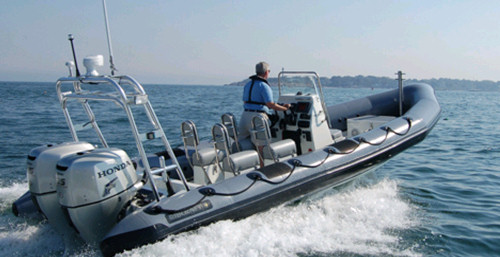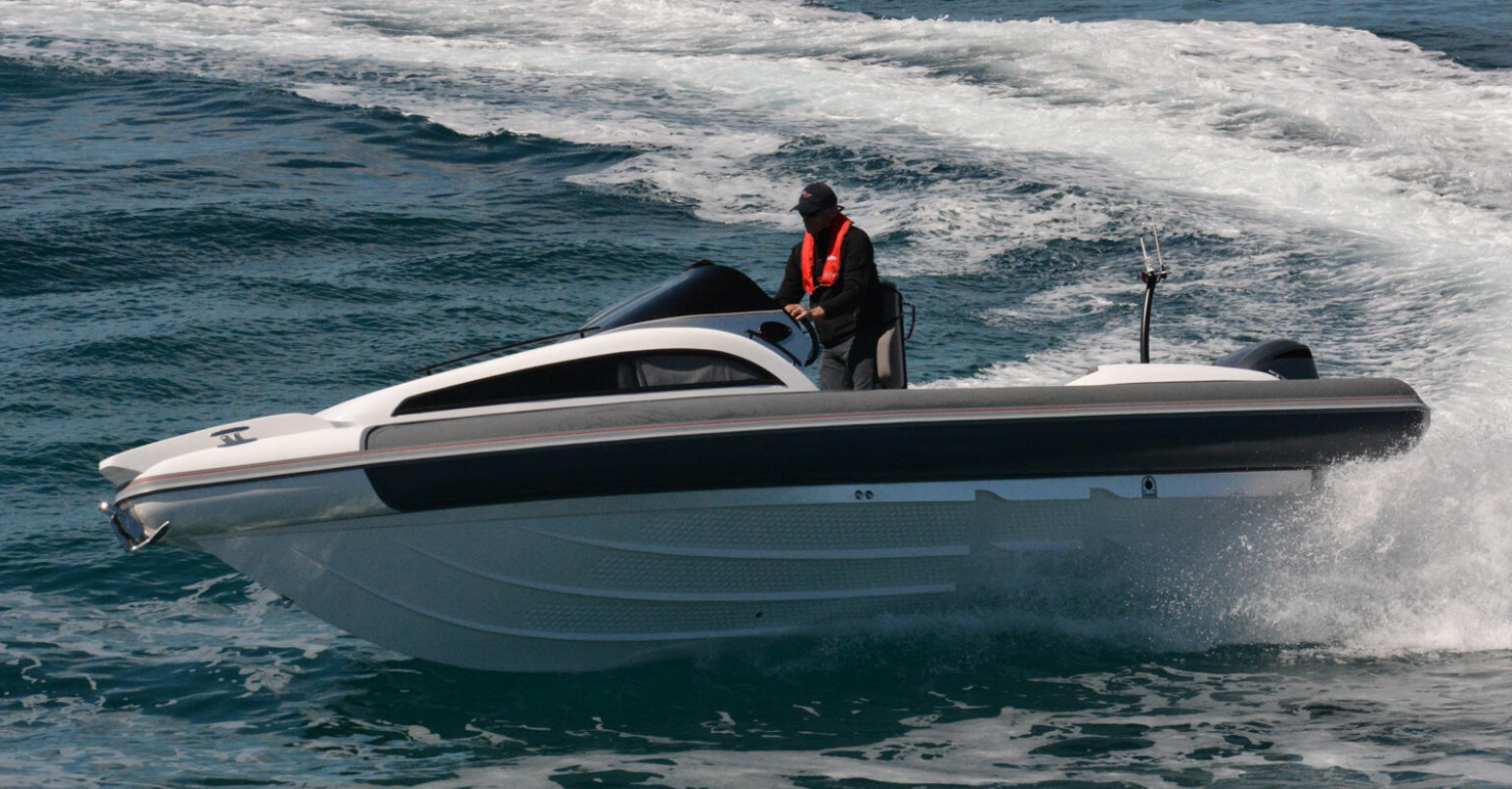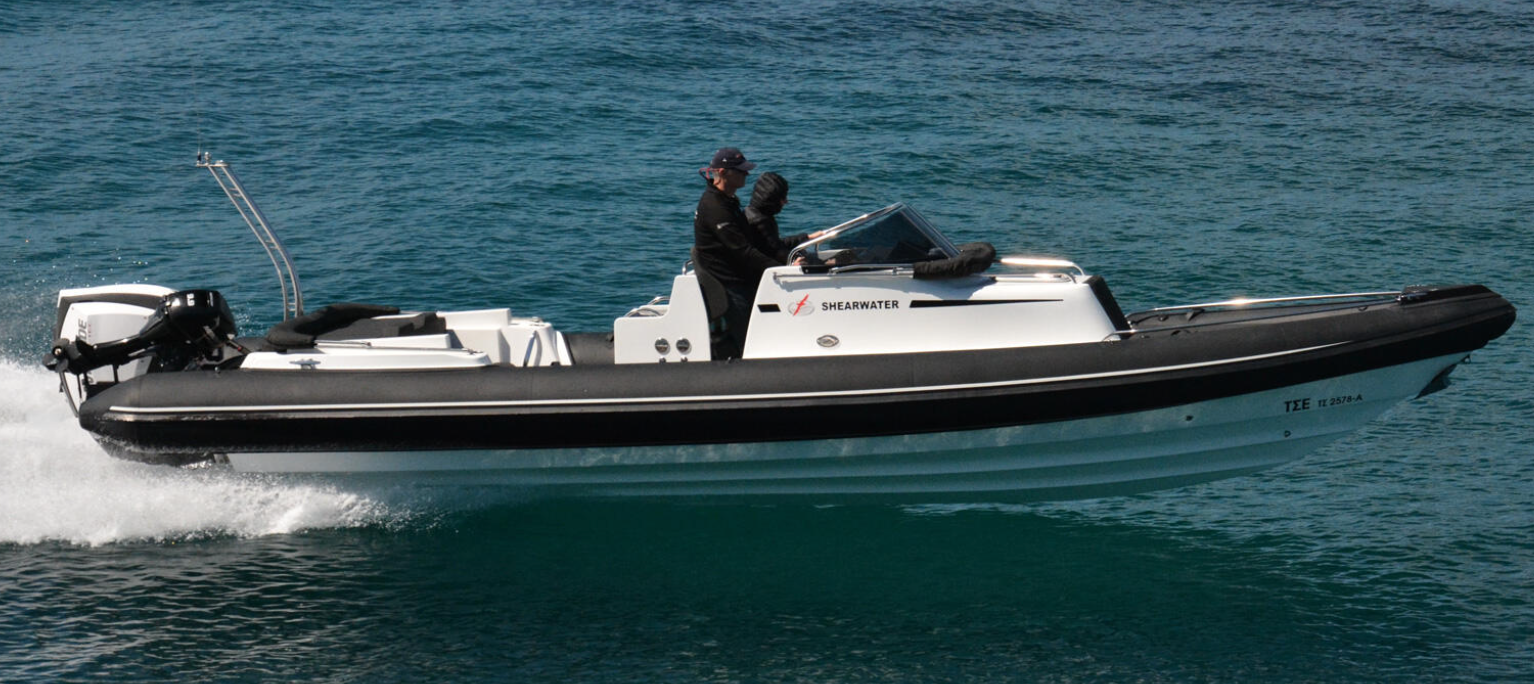How to Set Up a RIB

By Thomas P. — e-Ribbing.com
Many friends are interested in learning more about the proper setup of their boat and they seek a concise and a simple approach to a complex subject. If we attempted to give a definition of the term “proper boat's setup,” we would say that it is the suitable combination of all those factors that affect the boat’s ride to achieve its optimum performance for the specific use we want. Our aim should be finding the optimum efficiency of a particular engine and hull combination.
Setting up a Boat Properly is the Key to Maximize Performance.
A boat’s performance is influenced by many factors that interact with each other, many of which cannot be controlled because we don’t know exactly what is going on behind our transom.
The interactions of the water, hull, lower unit and propeller are complex and constantly changing according to our speed, loading and sea condition. We also need to take into account a plethora of factors such as engine’s gear ratio and mounting height, propeller’s distance from the transom and weight distribution. They all play a significant role in the performance of a boat, so it is obvious that we need to have a general knowledge of all the above parameters to set up our boat properly.
For many people, understanding all the above mentioned items seems like trying to move an iceberg, but we will try to make it as simple as we can.

What’s in a Name?
When we refer to the “maximum performance of a boat,” we mean the best numbers in terms of top speed, cruising speed, slip percentage, fuel consumption or time to plane combined with the best possible behavior in riding attitude, handling, and generally the quality of navigation.
Achieving the maximum speed does not mean we get the maximum performance of our boat. We have pointed out many times that we cannot have a specific setup for every use. We cannot achieve the maximum top speed and the shortest time to plane or get on plane at the lowest possible rpm with the same setup. We cannot get the best possible ride quality in tough weather and at the same time gain the ultimate final speed. A setup for maximum top speed sacrifices time to plane, increases the slip percentage at low and medium rpm and degrades ride quality in rough waters. On the other hand, a setup for strong acceleration and a good handling in rough waters sacrifices top speed.
So we need to decide the use for which our boat is intended and then focus on proper setup.
A different setup is suitable for a boat intended for long-distance trips rather than for a boat intended for fast rides/races or for one pulling a skier.
It is impossible to give all the required instructions that should be applied in each case in a single article. We can focus, however, on some steps that are useful to follow as a guide for setting up any boat.

Setting up in Action
First we must know that the boat’s setup starts from the choice of the engine mounted on our transom. One of the main factors that will determine the choice of the engine, along with the use for which our RIB is intended, is the hull itself. The length and characteristics of the hull determine the amount of horsepower and the kind of the engine chosen. After choosing the engine and deciding on our boat’s use, we add the loads we plan to carry and head out for real-world sea trials.

Follow These Tips, Experimenting With:
The Mounting Height of the Outboard Engine
The engine’s mounting height is one of the most critical setup elements. That is why a jack plate is necessary. It’s the only way we can adjust the engine height. So lower the engine on the transom and start your measurements.
Concerning rigid-hulled inflatable boats and the usual type, we can start our sea trials by aligning the cavitation plate 1.6” (4 cm) above the bottom of the transom.
Record the speed, the fuel consumption and estimate the slip percentage in the rpm range. Measure the acceleration and the time it takes to plane, try all trim levels and feel the hull: its behavior, handling, how it stands on the water at every speed, the throttle response, the bite of the propeller. Write down your measurements and impressions and try several times.
When you are finished and sure about your measurements and impressions, raise one hole .79” (2 cm) higher the engine and follow the same procedure by taking precise notes. Continue to raise the engine until you reach the highest possible position. For maximum objectivity, conduct all tests on the same day in the same sea area.
When you’re finished, put your notes on the table and compare the performance of your boat at all engine heights. Trust the numbers and your feeling at the helm, not the unsubstantiated theories that some people try to apply. Math never lies.

The key is to find the engine height that gives you the best combination of measurements and the hull’s behavior for your intended use.
Always remember that the higher we raise the engine, the less the amount of gearcase in the water and the higher the final speed. As height goes up, the thrust decreases along with our ability to raise the bow. Also, if we raise the engine too high, the propeller can ventilate and lose its bite in the water. We won’t be able to carry the bow and speed will drop.
On the other hand, the more we lower the engine, the more gearcase we have in the water so the final speed drops. But we gain thrust and bow lift. If we set the engine too low, the gearcase creates excessive drag, reducing the final speed and fuel efficiency.
For any boat/engine combination and use there is an ideal engine height.
The key is to find the perfect balance of thrust and speed for all-around use. In other words, we want the engine as high as possible without impeding the ability to get on plane.
Propellers
Another factor to experiment with is the type of prop. There are many high-performance propellers on the market, but only a few of them will fit a given boat-engine combination. The propeller an operator chooses is defined by its distance from the transom, the engine’s gear ratio, the hull characteristics and the use of the boat. Arguably, the most important determining factor is the engine’s mounting height. Each propeller is designed to work at a specific height. Some work better in deep water, others on the surface, and others halfway out of the water. The choice of the propeller should always be made in conjunction with the engine mounting height.

Keep in mind that propellers with more blade area (including the number of blades), a higher rake angle, taller cup and larger diameter work better at elevated mounting heights.
A three-blade propeller usually runs faster than a four-blade one of the same pitch. Conversely, the more the blades a propeller has — under certain conditions — the quicker the planing time, the better the bite in the water and the handling of the boat in rough water.
For every mounting hole we raise the engine’s height we gain 150 to 200 rpm. This means that we can add 1” (2.54 cm) of pitch or one more blade, remaining at the same engine rpm.

Weight Distribution
Proper weight distribution is another important factor that affects boat performance and helps establish the right setup. Achieving the right distribution of weight can take several hours of testing and observation.
An improperly loaded and balanced pleasure boat can lead to an increase of the hull’s wetted surface, which requires more power and leads to increased fuel consumption, speed reduction, inappropriate ride attitude and poor boat control, especially in bad weather.
The Center of Gravity
The center of gravity is a specific point that we must not “disturb” in any way. If this is not possible, at least we shouldn’t move far away from its sweet spot. As a general rule, place heavy objects as close to the console as possible, on almost i.e. the aft third of the deck, which is usually the location of the boat’s center of gravity.
The lightest things must be placed on the stern the load, especially in recent years thanks due to prevailing four-stroke outboard engines. Also make sure to keep the bow light so it can respond to engine trim. The ride attitude is the best indicator of setup and is a crucial factor of handling in calm and rough seas.

Remember that only 22.5 lbs. (10 kgs) on the bow can affect the boat’s performance and is equivalent to multiple pounds around the console.
The best combination of an engine’s mounting height/propeller/weight distribution will give us the ideal setup and the maximum performance.
Unfortunately, there is no formula that gives the best combination and suggests the right setup. Each factor influences the other and finding the best combination requires knowledge, rationality, hard work and many sea trials. Also, remember that in an ideal setup, our engine should never exceed the manufacturer’s maximum rpm at WOT.
All the above principles mentioned are also valid to any multi-engine installation.